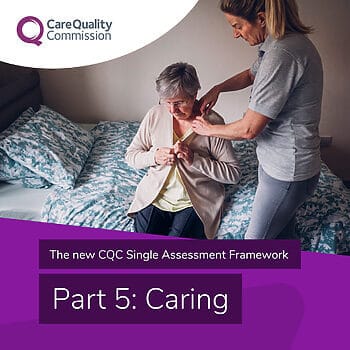The Care Provider Alliance (CPA) has launched the CQC Single Assessment Framework (SAF) review, a project commissioned by the Care Quality Commission (CQC). This review aimed to gather insights from social care providers regarding their views on the SAF and their vision for the future of regulation.
This initiative is crucial to ensure that any modifications to the CQC’s regulatory strategy reflect the diverse range of service types and perspectives within the sector. The CPA’s approach intentionally avoids duplicating the efforts of Professor Sir Mike Richards. Instead, it seeks to enhance its broader mission by offering a comprehensive examination of the experiences faced by social care providers.
Whilst the focus of the work was the Single Assessment Framework itself, other elements of the regulatory landscape such as the current backlog of assessments inevitably contribute to and distinguish between the perspectives of providers and as such are not possible to keep entirely removed from the findings.
The report clearly indicates that providers are eager for changes that align with industry expectations for the future. Consequently, the collaborative report has identified several critical issues that need to be addressed as we move forward.
Key findings
- The quality statements are excessive and often overlap, making the guidance intended to support them unclear and insufficiently tailored to the specific type of service being evaluated
- Preparing for assessments and conducting self-assessments within services can impose a considerable administrative burden and is open to individual interpretations of quality statements
- Concerns have emerged regarding providers’ uncertainty about inspectors’ interpretations of what ‘good’ looks like
- The flexible application of a sample of quality statements during assessments can lead to missed critical information during inspections
- Providers assessed under the SAF have reported feelings of disorientation and distress which have also affected staff retention
- The process of challenging assessment outcomes has proven to be a complex, time-consuming and frustrating administrative endeavor. Unfortunately, it often results in minimal to no satisfactory resolutions for providers
- Inspectors do not always have sufficient knowledge of a wide diversity of service types
- Reports frequently lack clarity, accuracy and timeliness resulting in ratings that fail to provide meaningful insights to the public. Consequently, both the inspection process and the reports do not effectively promote quality improvement among providers
- Effective communication with the CQC has become increasingly challenging for providers
There is often no dependable pathway through online systems and providers frequently receive little to no acknowledgment or feedback regarding the information submitted to the CQC. Additionally, it seems that communications within the CQC do not consistently reach all inspectors resulting in some being unaware of recent developments in the constantly evolving landscape.
Key recommendations
While there seems to be minimal desire for a complete revamp of the Single Assessment Framework, providers have indicated that it represents an advancement over previous inspection methods. However, there remains significant potential for further enhancements to ensure that the Single Assessment Framework becomes a truly effective alternative.
- To develop a streamlined set of quality statements and evaluate all providers based on a uniform set of criteria for each routine inspection
- The ‘standard set’ of quality statements tailored for each service type can be adjusted to emphasise the specific elements of service delivery that are most pertinent to them
- Shared Lives providers were the only group to express a preference for more flexible and frequent assessments, based on a streamlined set of quality statements
- Develop comprehensive guidance for each service type, focusing on the quality statement level. Each guidance set should provide clear examples of what constitutes good and outstanding performance. Additionally, it should specify areas where certain aspects of a quality statement may not apply to the respective service type
- Use the information in the Provider Information Return to plan a timeline, CQC staffing and priorities for assessment
- Distribute the assessment plan along with the requests for evidence to the providers and ensure they receive advance notice of the upcoming inspection
- Evidence requests, assessment timelines and inspector numbers should be reasonable and proportionate to service demands
- It is essential to ensure that the evidence used in decision making is corroborated rather than accepted at face value
- Revise the reports of providers that were evaluated during the timeframe from the implementation of the SAF to the stabilisation of the regulatory approach
- Establish a collaborative and purposeful strategy for co-production with service providers which will serve as a foundation for future initiatives within CQC’s ongoing recovery program
- Establish a designated point of contact or a named inspector for service providers
- Train inspectors in collaboration with care providers to recognise and appreciate the various types of care services and the individuals they serve
- Establish an independent body to mediate all complaints and challenge processes
- Effective communication of all changes in the regulatory approach is crucial
- Communications to providers regarding anticipated changes at CQC should include realistic timelines for completion
To effectively implement these recommendations, the Care Quality Commission (CQC) must prioritise enhancing the assessment experiences of providers. This area has been identified as a significant pain point, negatively impacting both the CQC’s relationship with providers and their daily work experiences. Only time will reveal whether the challenges will be successfully resolved. Read the full report here.
In the meantime, check out the wealth of resources on CareLineLive designed to assist with compliance and enhance your success as a care provider.




